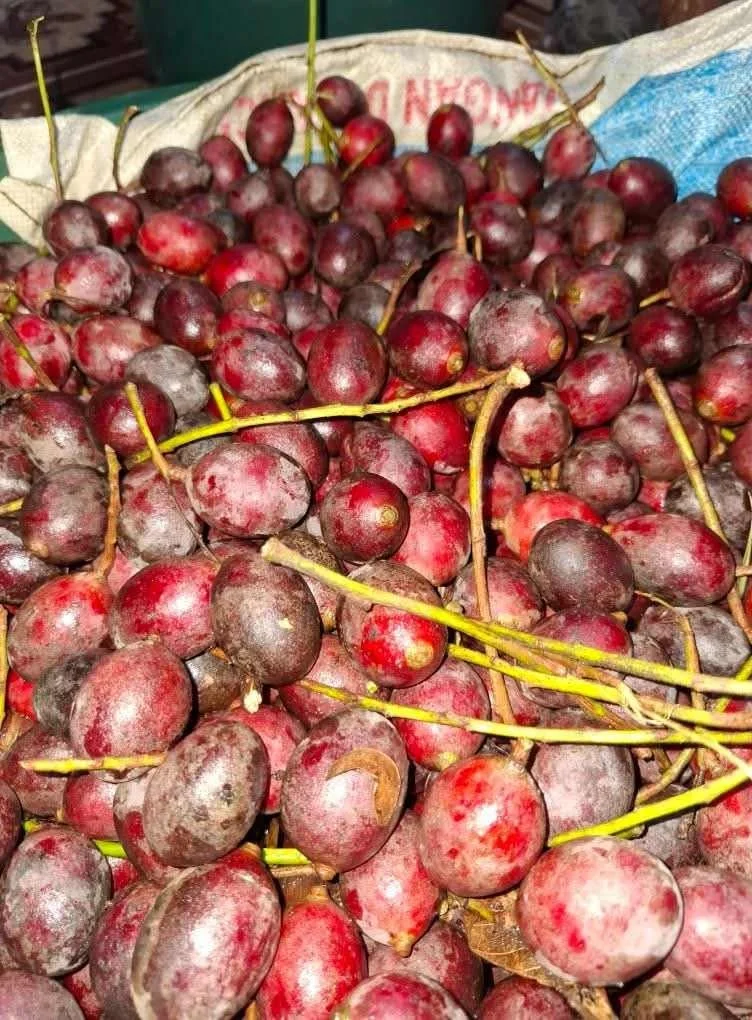 Image 1 of 2
Image 1 of 2

 Image 2 of 2
Image 2 of 2



Mangifera griffithii
Mangifera griffithii, commonly known as wild mango or buah binjai in parts of Southeast Asia, is a tropical fruit tree species belonging to the Anacardiaceae family. It is native to the lowland rainforests of Malaysia, Indonesia, Brunei, and parts of Thailand and the Philippines. The tree can grow up to 30 meters tall, with a straight trunk and a broad, dense crown, making it a notable component of the forest canopy. Its bark is usually dark brown and rough, while the leaves are simple, leathery, and dark green, arranged spirally along the branches.
The fruit of Mangifera griffithii is small to medium in size, ovoid in shape, and usually turns yellow to purplish-black when ripe. The flesh is juicy and aromatic but can range from sweet to sour, depending on the variety and growing conditions. While not as commercially widespread as Mangifera indica (common mango), it is locally valued for its edible fruit, which is eaten fresh or used in traditional dishes and sauces.
Seeds are sold in packs of 1. Seeds are shipped in humid vermiculite.
Mangifera griffithii, commonly known as wild mango or buah binjai in parts of Southeast Asia, is a tropical fruit tree species belonging to the Anacardiaceae family. It is native to the lowland rainforests of Malaysia, Indonesia, Brunei, and parts of Thailand and the Philippines. The tree can grow up to 30 meters tall, with a straight trunk and a broad, dense crown, making it a notable component of the forest canopy. Its bark is usually dark brown and rough, while the leaves are simple, leathery, and dark green, arranged spirally along the branches.
The fruit of Mangifera griffithii is small to medium in size, ovoid in shape, and usually turns yellow to purplish-black when ripe. The flesh is juicy and aromatic but can range from sweet to sour, depending on the variety and growing conditions. While not as commercially widespread as Mangifera indica (common mango), it is locally valued for its edible fruit, which is eaten fresh or used in traditional dishes and sauces.
Seeds are sold in packs of 1. Seeds are shipped in humid vermiculite.

